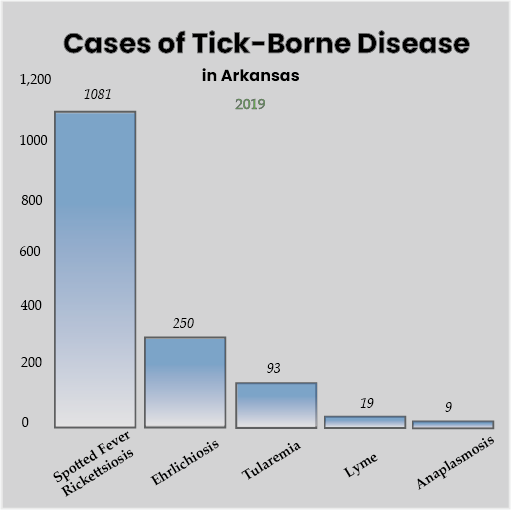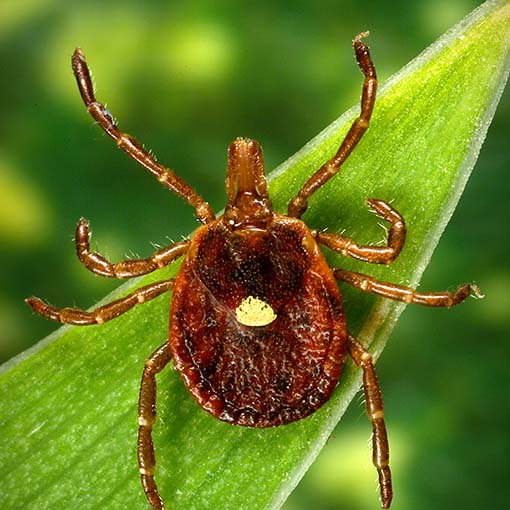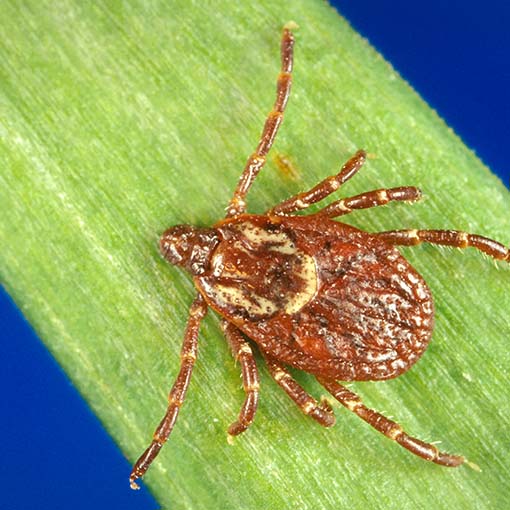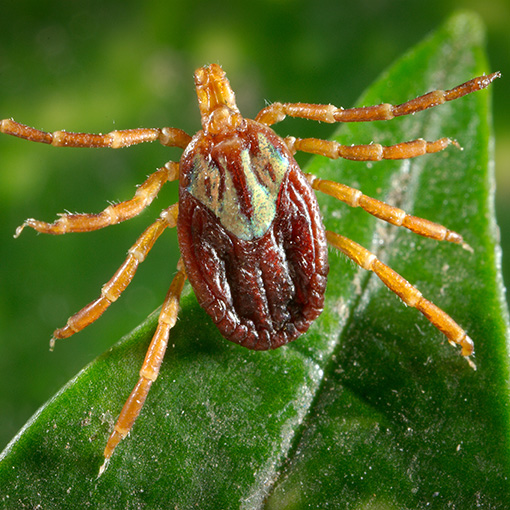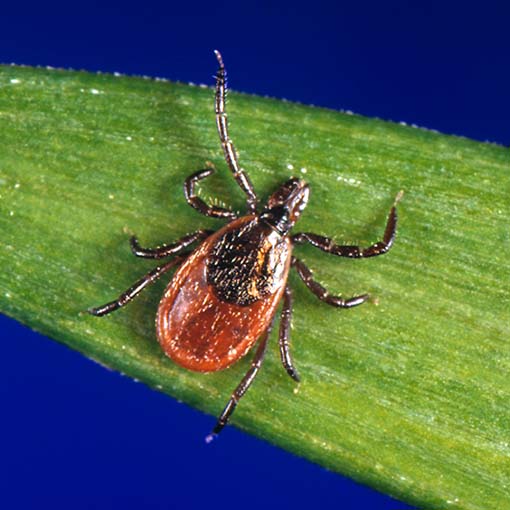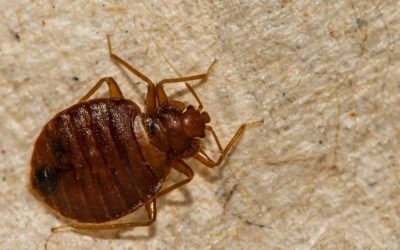Ticks. Bloodsucking little insects that can pass on harmful diseases.
Most abundant April through September (though possible year round) in Arkansas, these parasitic little pests are often found waiting in wooded areas or for their next meal – including humans – to pass by.
How dangerous are they?
While a tick itself isn’t dangerous – it simply drinks blood – the diseases it can pass during feeding are extremely harmful. In some cases, fatal.
Tick-borne disease symptoms are typically minor such as a rash, headache, or fever. However, if not treated promptly they can progress to life-threatening including neurological symptoms (inflammation of the brain, numbness in the limbs), paralysis of the face, and organ damage. Some tick-borne diseases can be cured, others are lifelong.
The key to avoiding these diseases is prevention.
What tick-borne diseases are in Arkansas?
In Arkansas the most common tick-borne diseases are Rocky Mountain Spotted fever (the most common, with over 1,000 cases yearly), ehrlichiosis (around 200 year), and tularemia (less than 100 cases a year), according to the Arkansas Department of Health. Though less common, anaplasmosis and Lyme disease are also a concern.
There have been reported cases of babeisos bourbon virus and heartland virus, though these are rather rare.
According to this article, in Arkansas there have been 270 people diagnosed with the syndrome between 2013 and 2015. Nearly 50 patients were diagnosed from two counties: Washington and Benton.
Click here for more statistics on tick-borne disease in Arkansas.
How do you know if a tick is carrying a disease?
Simple answer? You don’t. The only way to know is if symptoms appear.
The first symptoms appear anywhere from 3 to 30 days after the initial tick bite, though the average is around 7 days. If symptoms do appear, contact a medical provider.
Although not always necessary, the antibiotic Doxycycline is usually prescribed.
How long does it take for a tick to transmit disease?
According to WebMD, for the majority of cases if the tick is removed within a 24 hour time period, you’re likely to be safe. In the case of Rocky Mountain Fever, however, the time of infection is much lower, with possible infection starting as low as 4 hrs. (but more likely to take 10 to 20 hrs.). This just happens to be the tick-borne disease most common in Arkansas.
A tick needs to be feeding to transmit disease. If you’ve simply brushed off a crawling tick, it can’t infect you. If it’s been feeding for more than 24 hours, however, and is engorged, the likelihood of infection is higher.
The process it takes for a tick to attach and begin to feed can take several hours. Once it is attached and begins feeding, it can then pass on a disease, if it’s carrying one.
What ticks are in Arkansas?
While there are 19 species of tick in Arkansas, some are more likely to carry disease than others.
The following are some common ticks in Arkansas, in order of most common to least. The most common (and very likely to carry disease) is the lone star tick.
Lone Star Tick
Names: Known as the lone star tick, the northeastern water tick, or turkey tick, its scientific name is Amblyomma americanum.
Appearance: The lone star tick is so named by the silvery white dot on its back, supposedly in the shape of Texas (though that’s open to interpretation). Both males and females are reddish brown in color, but only the females have the white marking. The males can be differentiated by silvery white streaks on the outer edge of their body.
Gathany, James, female lone star tick Amblyomma americanum, 2006, CDC website: https://phil.cdc.gov/details.aspx?pid=8683
Diseases: The most common tick found in Arkansas (around 90%), the lone star tick can transmit the diseases Rocky Mountain Spotted Fever, ehrlichiosis, Southern Tick-Associated Rash Illness (STARI), tularemia, and lead to alpha gal syndrome. Lone star ticks do not carry Lyme disease.
Danger level: If a lone star tick bites you, it’s very likely they carry disease. According to Tickcheck, in Arkansas 42% of lone star ticks carry at least one disease, 30% carry two or more diseases, and 3% of ticks carry four or more diseases.
The Lone Star tick is the primary tick to cause alpha-gal syndrome, with up to 3% carrying the disease.
Extra: Lone star ticks are aggressive, sometimes pursuing a host for long distances.
Gathany, James. Female American dog tick, Dermacentor variabilis, https://phil.cdc.gov/Details.aspx?pid=170
American Dog tick
Names: Commonly known as the American dog tick or wood tick, its scientific name is Dermacentor variabilis.
Appearance: American dog ticks don’t have many distinguishing features from the lone star tick. Both the male and female are reddish brown. The female is slightly larger, and has an off-white scutum. One difference is they have a hexagonal basis capituli (where the mouthparts attach) that can only be seen with a microscope.
Diseases: Rocky Mountain Spotted Fever, tularemia, and tick paralysis.
Danger Level: American dog ticks are much less likely to carry disease than lone star ticks. Only about 1 in 1,000 American dog ticks carry Rocky Mountain Spotted Fever.
Extra: American dog ticks are 3 host ticks, meaning they need to have three different blood meals to reach the next stage of life. It’s usually only in the final stage, adult, that these ticks will bite larger mammals. Its preferred hosts are dogs (hence the name), but will readily bite any larger mammal like cattle, horses, and even humans.
They’re also unique from other ticks in that they can complete their entire life cycle indoors.
Gulf Coast Tick
Names: Gulf Coast Tick. Its scientific name is Amblyomma maculatum
Appearance: Extremely similar to American dog ticks in appearance, gulf coast ticks are reddish brown in color with silvery white markings. It can be differentiated by more slender mouthparts and an angular scutum (the area next to the head), though these are difficult to see.
Diseases: Rickettsia parkeri rickettsiosis (a form of spotted fever), ehrlichiosis, tularemia, STARI, tick paralysis.
Danger Level: According to this article, 30 Percent of gulf coast ticks in the southern U.S. were found carrying the disease for Rocky Mountain spotted fever.
Extra: Typically found in grass prairies and coastal uplands.
Dr. Christopher Paddock, female Gulf Coast tick, 2008, CDC website:https://phil.cdc.gov/Details.aspx?pid=10876
Gathany, James, female blacklegged hard tick, 2005, CDC website: https://phil.cdc.gov/Details.aspx?pid=7663
Blacklegged tick
Names: Known as the blacklegged tick, deer tick, or bear tick, its scientific name is Ixodes scapularis.
Appearance: The females (males do not feed), are orange-brown with a dark scutum. They have dark legs (hence the name blacklegged tick), which makes them easily distinguishable from others.
Diseases: Ehchlichiosis, tularemia, anaplasmosis, babesiosis, powassan disease, and Lyme disease.
Danger Level: For Lyme disease, infection rates in the south are usually less than 10 percent. Move farther north, however, and up to 50 percent of blacklegged ticks can carry an infection.
Extra: Blacklegged ticks live in wooded and grassy areas in higher elevations, commonly found where their favorite host lives: the white tail deer.
This is a useful website for more in-depth information on how to distinguish tick species.
Final Thoughts
If you’re interested in preventative tick measures around your home, be sure to check out NaturePro pest control; we offer year round pest control that’s safe for you and your family.

